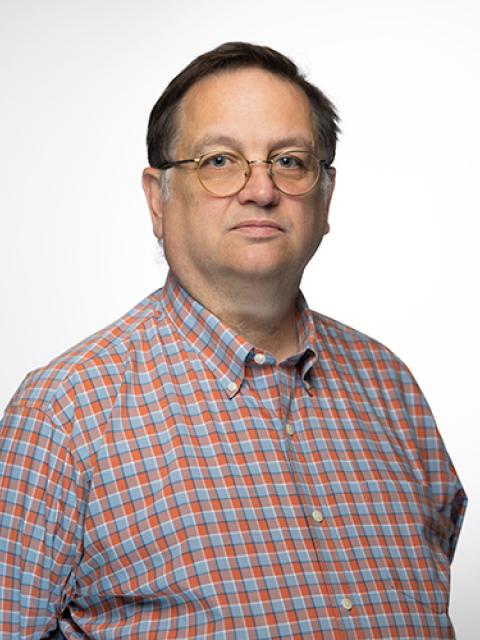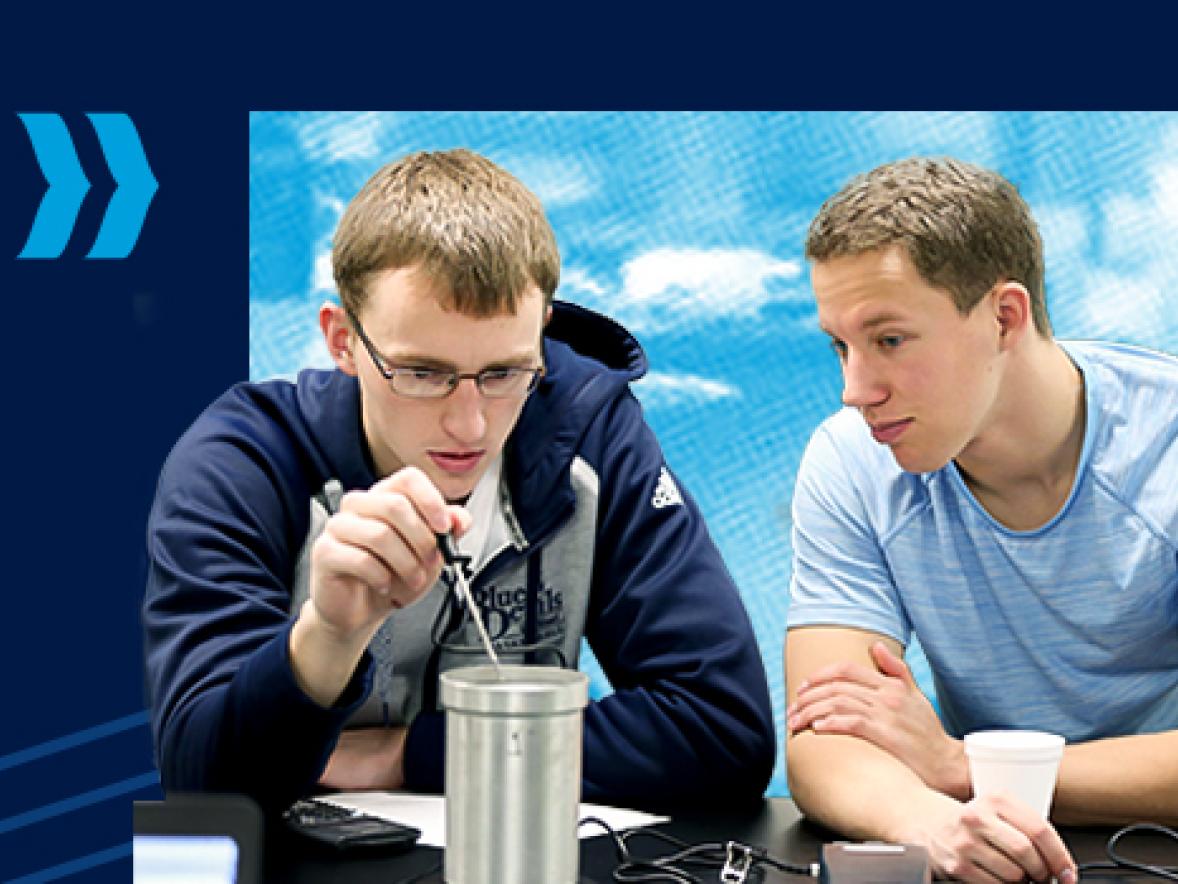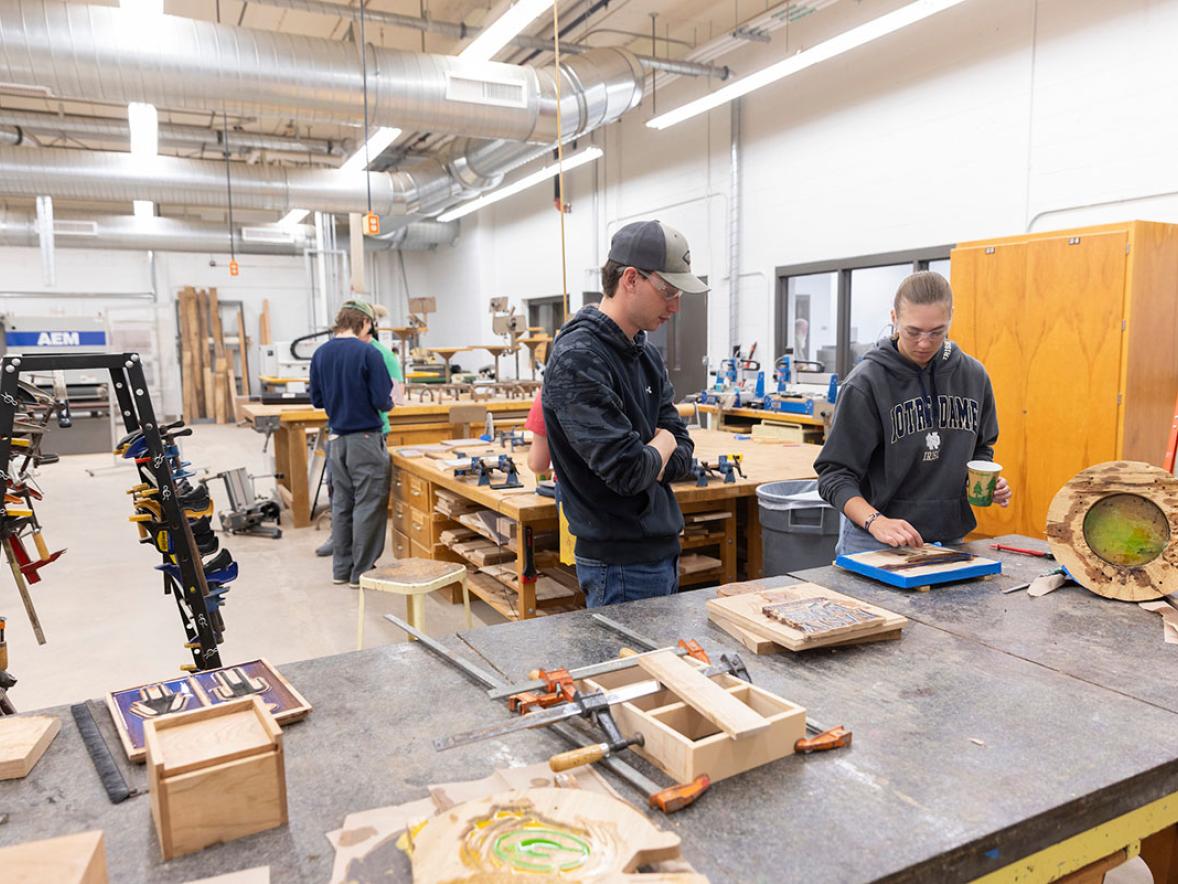An unassuming slab of grey concrete recently poured on the University of Wisconsin-Stout campus is much more than a sidewalk in front of a pair of bus shelters – it’s an example of how engineering can lead the way to a more sustainable, lower-carbon future.
On a bright spring day the innovative concrete concoction was mixed, poured, shaped and finished by about a dozen members of the Student Construction Association under the expert eye of Associate Professor Kevin MacDonald, director of the B.S. construction management program. Now, as it continues to cure and harden, the concrete will be monitored for its strength and sustainability.
And considering that concrete – the most-used construction material in the world – is responsible for an estimated 8% of total global carbon emissions, creating it more sustainably is vital to the planet’s future.
“This is a perfect example of why the polytechnic education works very well,” MacDonald said, reflecting on the project. “Because we’re not looking at making a single cylinder or maybe a paving stone of concrete. We’re looking at making a real sidewalk. We’re learning what are the implications, what are the problems that we encounter when we go to make it, and how can we solve them?”
MacDonald has decades of experience in the industry, working on projects as notable as replacing the Interstate 35W bridge in Minneapolis when he was vice president for engineering services at Twin Cities-based Cemstone. MacDonald has been working with low-carbon concrete for years, he said, but this is the first time he’s used this particular recipe in ready-mix concrete trucks.

Moving from lab to sidewalk
The concrete project is the indirect result of upcoming renovations to Heritage Hall, which required the shifting of the bus shelters to a spot in front of the Robert S. Swanson Library & Learning Center. After learning about the proposed relocation, MacDonald knew it could become a learning opportunity for his students and a real-world test for one of his concrete recipes, which doesn’t use traditional portland cement – the manufacture of which is highly resource intensive.
A week before the big pour, MacDonald and a handful of students gathered in the construction lab inside the Jarvis Hall Technology Wing to test several cylindrical samples of concrete in a compression testing machine. As the pressure steadily increased to nearly 8,600 pounds per square inch, the samples cracked loudly and ultimately broke, shedding aggregate onto the ground below. After the tests, MacDonald scribbled calculations with one hand while typing numbers into a calculator app with the other.
Next, MacDonald led the students in preparing some of the chemicals needed to create the concrete, carefully pumping sodium carbonate – a caustic liquid used in drain cleaners – into a series of pails. The liquid would provide a critical ingredient the following week when the concrete was ultimately mixed, serving as a chemical activator to the primary ingredient, blast-furnace slag. This slag, a byproduct of steel production, was used as an ecologically friendly substitute for portland cement. Not only is the slag less resource-intensive because it’s an industrial byproduct, MacDonald said, but it also creates a stronger final product, meaning less material is needed. Furthermore, because of its chemical properties, concrete made with slag instead of portland cement removes more carbon dioxide from the atmosphere, making it not just carbon neutral but potentially carbon negative.
Joking that “the heaviest thing I lift up most days is a pen,” MacDonald knew that the Student Construction Association would be an ideal partner for the project. UW-Stout senior Jeremy O’Connor, the club’s president, was one of more than a dozen students to help with the early morning concrete pour on April 29.
As other students stood by with concrete rakes and other equipment, O’Connor – clad in safety gear atop a scissor lift – carefully “dosed,” or poured, the liquid ingredients into the back of a Cemstone ready-mix truck. As the dark-grey material flowed out, the students worked quickly with their tools to ensure the concrete flowed evenly and smoothly into the 10-foot-by-50-foot form laid out for it. The concrete was placed in about three hours, then cured under plastic for two days. The concrete strength at two days was greater than the 20-year strength of a conventional sidewalk, MacDonald said.
Student benefits from ‘world-class expertise’
O’Connor said the project was challenging not only because of the atypical mixture of ingredients but also because the mixture set much more quickly than typical concrete – about 75 minutes compared with two hours or more. “This made it extremely hard to finish because it set so quickly compared to the pace we were pouring at,” he said. In addition, strong sunlight and winds dried the surface of the concrete faster than expected.
Nonetheless, he added, “We were still able to finish the concrete successfully and complete the pour through adversity.”
O’Connor said it was an “amazing experience” to work with someone who has the depth of knowledge that MacDonald does. While he has world-class expertise, MacDonald is still able to provide jargon-free explanations that even people who aren’t in the construction field can understand, O’Connor said.
“I have worked with (MacDonald) in many classes and other projects, which has only increased my appreciation for the expansive wealth of knowledge he so generously shares,” O’Connor said.
O’Connor added the experience allowed him to practice all the steps of a construction project, from site utilization and speaking with owners to preparing estimates and creating a schedule. “By applying knowledge I have gained through the university, my professional experiences, my internships, and my competition teams, I am in a much better place following my completion of college because of the knowledge, expertise, and great experiences I have gained,” he said. “(The project) has also exposed me to this brand-new material, which I believe will be implemented in many projects in the future, as it will revolutionize the construction industry, help global warming, and make the world a better place.”
O’Connor graduated in May and in June began work as a field engineer with Gilbane Building Co. in Rochester, Minnesota.
Addressing climate change with engineering
The relocation of the bus shelters was made necessary by the upcoming renovation of Heritage Hall, which will begin in August, said Justin Utpadel, the university’s senior facilities officer. The original site of the shelters was within the boundaries of the project, so university planners decided to move them down 10th Street East to a spot in front of the Robert S. Swanson Library & Learning Center. This provided a perfect on-campus construction opportunity for MacDonald and his students.
The project, Utpadel added, was a win for all parties, supporting not only the students’ education but also a major campus renovation project and the needs of bus riders.
Ultimately, the experience and data gathered from the concrete pour will also provide helpful in the concrete industry’s ongoing efforts to become more environmentally sustainable. Just days after the concrete was poured, MacDonald noted, the Portland Cement Association, a century-old national group representing U.S. cement manufacturers, announced it was officially changing its name to the American Cement Association. It’s one indication of the industry’s ongoing shift to lower-emissions products that don’t contain portland cement.
“It’s the biggest challenge in the concrete industry,” MacDonald said, referring to carbon emissions. “You can build buildings out of only concrete, but you can’t build buildings without it.”
He continued: “The climate change issue is an engineering problem we’re going to solve, and one of the ways we’re going to solve it is by reducing our emissions. That’s what this material is meant to do.”





